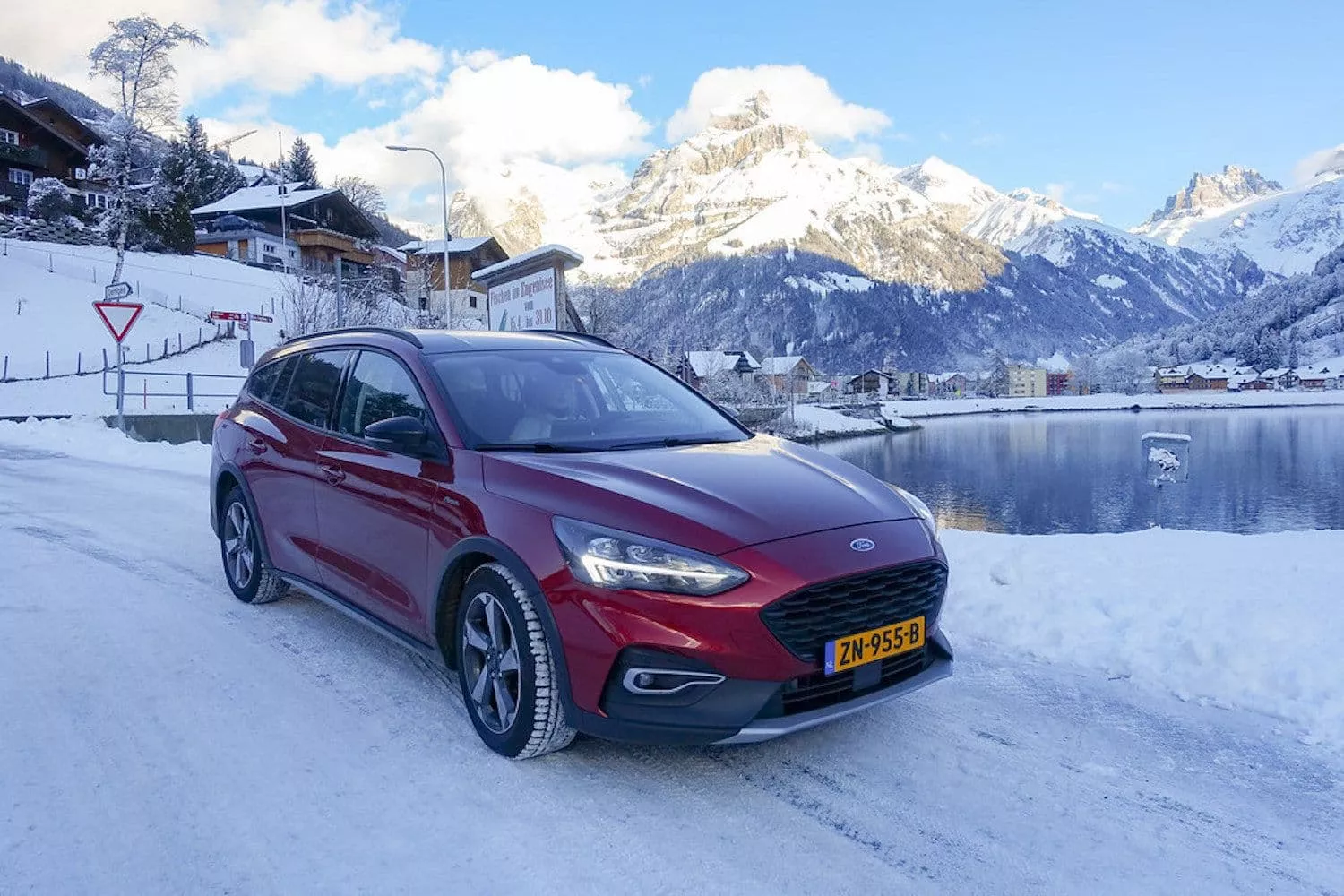

Anyone using the Swiss national roads this year will need a Swiss vignette for 2023. This requirement applies to all residents, tourists and vehicles in transit. Needless to say, you'll need a Swiss vignette if you're planning a winter holiday in Switzerland. It should be stuck on one of the designated areas on the windscreen and be clearly visible. Otherwise, you risk a fine. Are you planning a trip to a Swiss ski resort? Read all about the Swiss vignette for 2023!
Why do you need a vignette in Switzerland?
Since 1985, there has been a toll requirement for anyone wishing to use Swiss national roads. The toll is paid via a vignette instead of at a toll booth. Vehicles up to 3,500 kg, such as cars, motorbikes, motorhomes, and caravans, do so with the familiar vignette sticker. All heavier vehicles, like trucks, fall under the so-called 'Schwerverkehrsabgabe'. They pay toll at border crossings and do not need a vignette.

The price of a Swiss vignette for 2023
The price of a Swiss vignette has been fixed at CHF 40 since 1985. This amount is not expected to change in the coming years. Depending on the exchange rate, a vignette now costs around £35.45. Unlike in Austria, the price is the same for cars and motorbikes. Only a yearly vignette is on sale. However, keep in mind that it is valid from 1 December 2022 to 31 January 2024, so 14 rather than 12 months. The colour of the vignette changes every year. This year it is yellow. At the moment, only a sticker variant is on sale. From this year on, it will also be possible to purchase a digital vignette, but it is yet unclear when it will be available.
Important: Are you travelling to Switzerland with a caravan? Then you will need two vignettes - one for the car and one for the caravan.
Where can you buy a vignette?
There are several locations where you can buy a Swiss vignette. First of all, at the border. It is advisable to pay with Swiss francs, your debit or credit card. You can also pay in euros, but then you'll get change back in Swiss francs at a very unfavourable exchange rate. Ordering online is also a possibility, for example, via the Vignetteshop or the Swiss post website. In this case, the vignette will be sent to your home address.

How to stick a vignette on your windscreen?
Sticking a vignette on your windscreen is really easy. Just make sure you attach it to one of the designated areas. Driving with a vignette is compulsory on all national roads in the country, or you risk a hefty fine. But that would be a shame. Rather spend that money on a nice lunch on the slopes or a drink after skiing. Do you want to be sure how to attach a vignette properly? Follow these steps:
Step 1: Remove the back of the sticker. Keep the receipt.
Step 2: Attach the sticker to the top left corner, bottom left corner or under the interior mirror on the windscreen.
Step 3: You are now ready to drive around Switzerland. Enjoy your holidays!
Tips for using a vignette
- The Swiss vignette is valid from 1 December 2022 to 31 January 2024. This is ideal if you go on winter holidays to Switzerland more often during the season, but also if you go there during the summer months. By the way, did you know that you can also ski in Switzerland in summer? For example, in Saas-Fee or on the Zermatt glacier.
- Did your windscreen break while the vignette was still valid? Then you are entitled to a new one. Note: To get a new vignette, you will need to present your purchase receipt. So always keep it safe.
- When driving without a vignette, you risk a fine of CHF 200 (about £177). A waste of money!
- Keep the purchase receipt for the entire validity of the vignette.
- Always attach the vignette as explained above. Never use adhesive tape!
- Reusing a vignette in another vehicle is not permitted.
More information about the Swiss vignette can be found here.














